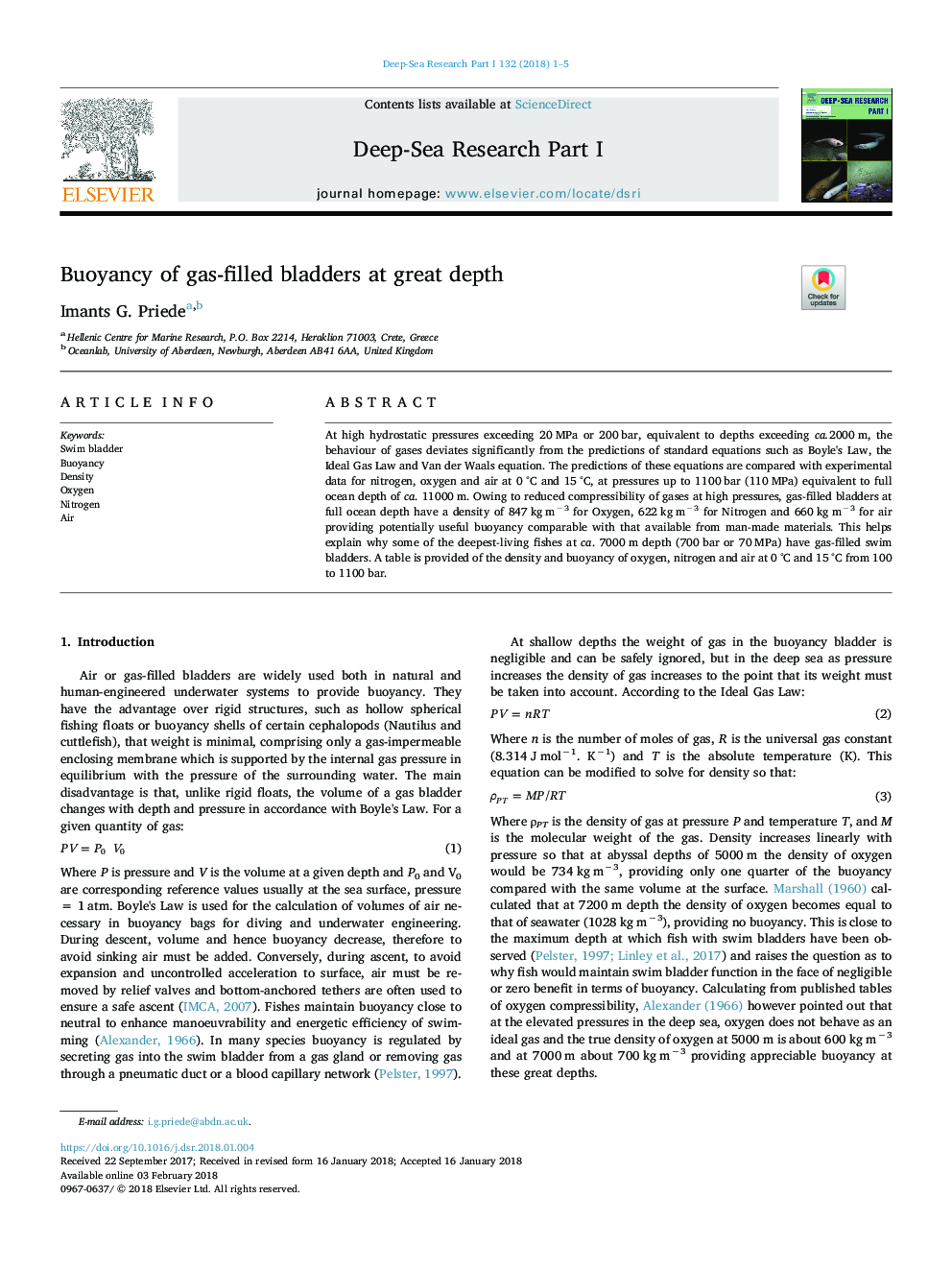| Article ID | Journal | Published Year | Pages | File Type |
|---|---|---|---|---|
| 8884271 | Deep Sea Research Part I: Oceanographic Research Papers | 2018 | 5 Pages |
Abstract
At high hydrostatic pressures exceeding 20 MPa or 200 bar, equivalent to depths exceeding ca.2000 m, the behaviour of gases deviates significantly from the predictions of standard equations such as Boyle's Law, the Ideal Gas Law and Van der Waals equation. The predictions of these equations are compared with experimental data for nitrogen, oxygen and air at 0 °C and 15 °C, at pressures up to 1100 bar (110 MPa) equivalent to full ocean depth of ca. 11000 m. Owing to reduced compressibility of gases at high pressures, gas-filled bladders at full ocean depth have a density of 847 kg mâ3 for Oxygen, 622 kg mâ3 for Nitrogen and 660 kg mâ3 for air providing potentially useful buoyancy comparable with that available from man-made materials. This helps explain why some of the deepest-living fishes at ca. 7000 m depth (700 bar or 70 MPa) have gas-filled swim bladders. A table is provided of the density and buoyancy of oxygen, nitrogen and air at 0 °C and 15 °C from 100 to 1100 bar.
Related Topics
Physical Sciences and Engineering
Earth and Planetary Sciences
Geology
Authors
Imants G. Priede,
